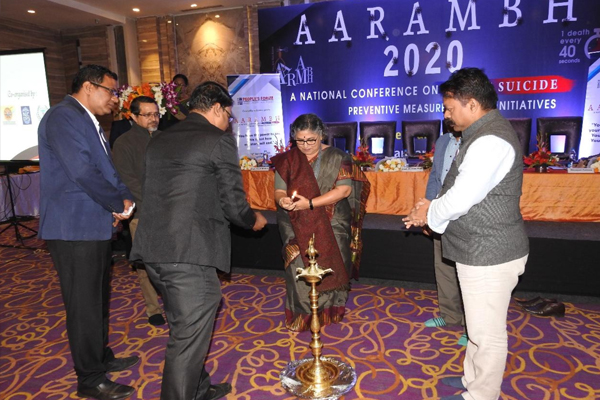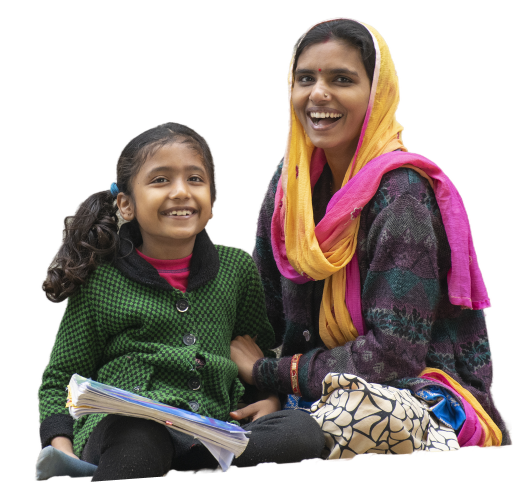Aarambh - National Conference on Youth Suicide: Preventive measures and lead initiatives
6th December, 2019, Bhubaneswar

The suicide rate among children and adolescents had increased dramatically in recent years, making it the second leading cause of death among youth and a significant public health concern. Developmentally, childhood and adulthood were critical periods where transition and significant cognitive, emotional, and social changes occurred. These transitions led the youth to face obstacles in maintaining mental health.
About 800,000 people died by suicide worldwide every year; of these, 135,000 were residents of India, a nation with 17.5% of the world population. The male to female suicide ratio was about 2:1. The National Records Bureau (NCRB) 2015 quoted that every hour, one student committed suicide in India. The conference had explored the impact of social media and gaming addiction on the acceleration of teenage suicide, contributing factors for suicidal drift among school students, stress of educated unemployed, and support mechanisms and legal systems as suicide preventive measures.
The alarming rise in teenage suicide was a wake-up call for all stakeholders to come together and address this critical issue. As a society, we needed to recognize the warning signs and provide support to our young people who were struggling with mental health issues. The conference aimed to spark a national conversation on teenage suicide, bringing together experts, policymakers, educators, and young people to share their experiences and insights.
One of the key areas of focus was the impact of social media on mental health. While social media had many benefits, excessive screen time and online harassment had devastating consequences for young people. We needed to educate our children on how to use social media responsibly and provide them with the tools to navigate the online world safely. Parents, educators, and mental health professionals needed to work together to create a safe and supportive environment for our young people.
Another critical issue was the stress and pressure that our education system placed on young people. The emphasis on academic achievement led to burnout, anxiety, and depression. We needed to rethink our education system and prioritize the well-being and mental health of our students. This included providing access to counselling services, promoting mindfulness and self-care, and encouraging a growth mindset.
The conference also explored the role of parents and caregivers in preventing teenage suicide. Parents played a critical role in supporting their children's mental health, and it was essential that they were equipped with the knowledge and skills to do so. This included recognizing the warning signs of mental health issues, providing emotional support, and seeking professional help when needed. Ultimately, preventing teenage suicide required a collective effort from all stakeholders. By sharing our knowledge, experiences, and insights, we could create a safer, more supportive environment for our young people to thrive.
Conference Objectives
The conference aims to:
1. Examine the current state of teenage suicide in India and globally.
2. Investigate the role of social media and gaming addiction in contributing to suicidal tendencies.
3. Identify key factors leading to suicidal drift among school students.
4. Discuss the impact of educated unemployment on mental health.
5. Explore support mechanisms and legal systems as preventive measures.
Key Areas of Focus
Social Media and Gaming Addiction
- The impact of excessive screen time on mental health.
- Cyberbullying and online harassment.
- The role of social media in perpetuating unrealistic expectations and promoting consumerism.
Suicidal Drift Among School Students
- Academic pressure and stress.
- Body shaming and peer pressure.
- Lack of emotional support and guidance.
Educated Unemployment
- The psychological impact of unemployment on youth.
- Skills mismatch and the need for vocational training.
Support Mechanisms and Legal Systems
- The importance of mental health education and awareness.
- Counselling services and helplines.
- Legal frameworks for addressing cyberbullying and online harassment.
Expected Outcomes
1. Increased awareness about the issues surrounding teenage suicide.
2. Identification of best practices for prevention and intervention.
3. Development of a comprehensive framework for addressing teenage suicide.
4. Collaboration and networking among stakeholders to promote mental health initiatives.
Target Audience
1. Academicians and researchers.
2. Mental health professionals.
3. Educators and school administrators.
4. Policy makers and government officials.
5. Students and youth leaders.
Powered by Froala Editor
